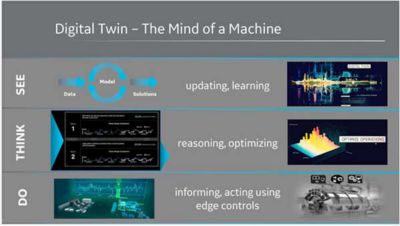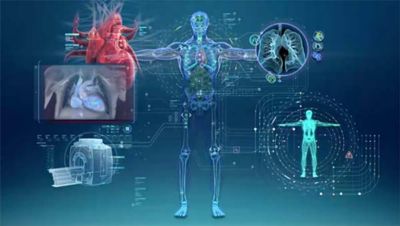ANSYS BLOG
May 17, 2017
Why Digitalization Needs Physics Based Simulation
Digitalization, digital transformation, and digital twins have become key business initiatives at many companies. The goal of these initiatives ultimately is to accelerate revenue and profitability growth by speeding innovation, improving productivity, and increasing reliability across the enterprise. Industry leaders know that revenue and profitability both suffer when their product fails to meet design objectives, underperforms the competition or does not meet customer expectations. When your product fails, your customer is unhappy, your re-design costs will be higher than planned, your reputation may be damaged, or worse, you may go out of business.
Given the complexity of today’s products, how can companies be sure that they will deliver the most reliable and innovative products to the market? Moreover, how can they leverage their product superiority to deliver additional value to their customer and more profitability for their business?
The answer to these questions includes physics-based modeling and simulation.
Digitalization in R&D - Smart Product Design
In a Wall Street Journal article titled, “Silicon Valley Stumbles in World Beyond Software”, Jack Nicas gives excellent examples of product prototypes that failed when deployed in the real-world. He notes that Google scrapped and redesigned a drone delivery project when it was discovered that the drone often toppled during takeoffs and landings due to wind. Chris Anderson, CEO of 3D Robotics, a supplier to Google, is quoted as saying, “It was a dumb thing about physics”! The article explains that, “In software, programmers can control their environment. The physical world is messy and unpredictable.”
That is a credible statement. Bad things happen when you neglect physics.
Physics-based engineering simulation can and is playing an important role in smart product development and testing today. Unlike building an actual prototype, physics-based modeling and simulation tools allow you to not only predict what will happen, but why it will happen. It gives you the insights you need to make the correct choices. In other words, simulation can help you choose between good ideas and bad ones, speeding you on your way to success in your digitalization journey.
And while the modern world is intensely focused on the opportunities presented by electrification, we should remember that structural mechanics, fluid-dynamics, and electronics are all governed by natural laws of physics. Therefore, to overcome the challenges of designing smart products, engineering simulation needs to include multiple physics to fully characterize and understand the behavior of the product in the real world, or risk failure. The short video below provides an example of how physics-based simulation helps engineers design better products for the digital world.
Digitalization in Operations - Digital Twins
According to Dr. Irving Wladawsky-Berger, Chairman Emiritus IBM Academy of Technology, digital twins are bringing physical and digital worlds closer together. Dr. Wladawsky-Berger notes that digital twins are quickly becoming an integral part of the industrial economy. General Electric and PTC have been on the forefront of this trend, launching the Predix and ThingWorx platforms to speed the development of industrial Internet applications.
"Companies can use digital twins to detect and isolate faults, perform diagnostics and troubleshooting, recommend corrective action, determine the ideal maintenance schedule, optimize asset operation, and generate insights to improve the next generation of the product." – Chris MacDonald, Sr. Director, Analytics GTM Strategy & Business Development, PTC
General Electric has deployed over 660K digital twins — an amazing accomplishment. This number will surely grow quickly in the coming years. Ganesh Bell, chief digital officer of software and analytics at GE Power and Water says that “the digital twin is not a generic model. It’s a collection of actual physics-based models reflecting the exact operating conditions, such as lifing, performance and failure modes, in the real world.”
Digital twins can reduce equipment down time by 30 percent – General Electric
In the this issue of Ansys Advantage magazine, Ajei Gopal, President and CEO of Ansys, shares that “simulation is the only way to fully realize the tremendous value contained within the digital twin”.

Courtesy of General Electric
To implement a digital twin for an asset, you begin with its physics-based model, Since many organizations are already using physics-based models to create their products, they can additionally employ them to simulate the product’s field performance in real-time using the same sensor information that the physical asset is experiencing. This real-time simulation with real-world data can enable real-time analytics, delivering better business outcomes through efficiency gains and reduction in unplanned downtime. Black & Decker, which manufactures power tools, has improved labor utilization by 12 percent and increased throughput by 10 percent. This digital twin of a pump illustrates how 3D physics simulation, connected to the ThingWorx platform, can be used to improve product reliability and asset up-time.
Digitalization across Industries
To be sure, the application of digital twins spans multiple industries. Thierry Marchal, Industry Director for Healthcare at Ansys, says that someday you will have your own digital twin! He notes that virtual model of ourselves will allow us to "fine tune treatments and predict the behavior of our own body to optimize our health". This technology will help reduce healthcare cost, improve quality of service, and make it easier to access healthcare information and services.

To learn more, check out Ansys's Digital Twin Technology.